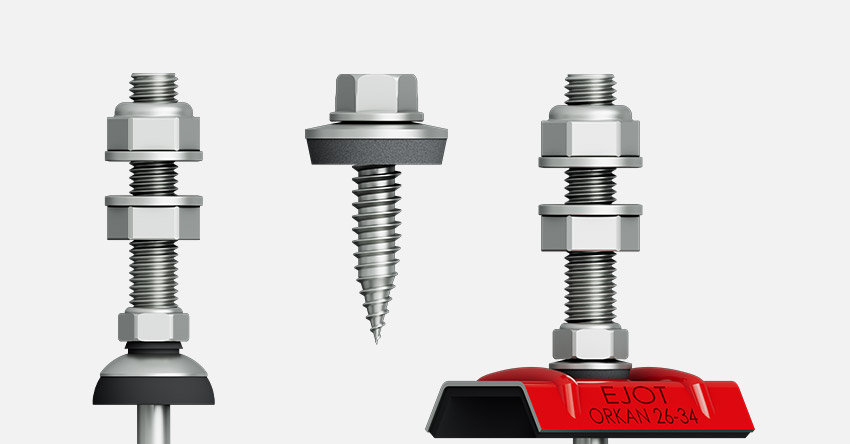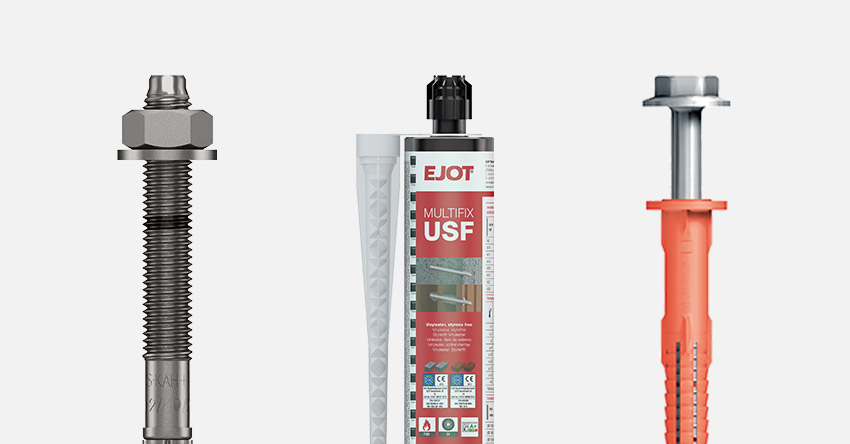How to use solar energy sensibly
Solar Guidebook – Part 1
The need for alternative forms of power generation has never been greater. There is an urgent need for alternatives to the fossil and nuclear energy source that are still in widespread use. As a result, the expansion of systems for utilising solar energy has once again become the focus of attention, particularly in recent times.
The aim of our new solar guidebook is to provide an introduction to the subject, present an initial overview of the various systems for utilising solar energy, and showcase the corresponding installation systems and fastening elements. After all, there are numerous systems and perfect fastening elements for every field of application. We will explain what you need to look out for and what the differences are, and provide you with all the key information required to gain an initial overview. And if you need help planning your next solar energy system, don't hesitate to contact us. Our application engineers will be happy to help!
The aim of our new solar guidebook is to provide an introduction to the subject, present an initial overview of the various systems for utilising solar energy, and showcase the corresponding installation systems and fastening elements. After all, there are numerous systems and perfect fastening elements for every field of application. We will explain what you need to look out for and what the differences are, and provide you with all the key information required to gain an initial overview. And if you need help planning your next solar energy system, don't hesitate to contact us. Our application engineers will be happy to help!
Photovoltaics or solar thermal?
Above all else, solar energy is incredibly practical. It is environmentally friendly, available free of charge in infinite quantities and can be found everywhere. It can be generated exactly where it is needed. At best, energy losses through transport or similar are prevented.The term "solar energy" is often equated with the generation of electricity. However, the fact that solar energy can also be used to generate heat or even for cooling is often forgotten. Basically, a solar installation serves to convert solar energy into another form of energy. This means that both photovoltaics (PV) and solar thermal energy are grouped together under this general term. A photovoltaic installation can convert solar energy into electricity. This is done using PV modules, which in turn consist of solar cells.
However, solar energy cannot only be used to generate electrical energy. Solar thermal systems use solar collectors to generate heat, which can be used to heat water, but also for heating. It is also possible to combine these two. The operating principle of solar collectors is different from that of solar panels. For the generation and transport of energy, the solar collectors use a heat transport medium consisting of a water and antifreeze mixture that circulates continuously between the collector and the buffer storage tank. This medium is heated by solar radiation. Through a heat exchanger, the medium can now heat the required water for direct use or for the heating in the buffer storage tank. The currently most common collectors are flat-plate collectors and tube collectors. Compared to flat-plate collectors, tube collectors require less space to achieve the same output because they are more efficient than flat-plate collectors. Selecting the optimum solar collector depends on various factors such as the required application, type of roof, available area, price and a range of other elements, and the decision must be taken by the system operator and their technical advisor.
When selecting the right mounting system, a distinction is currently usually made between roof-mounted and ground-mounted solar installations. In the near future, it is possible to imagine many more areas and surfaces that can be used to generate energy. Examples might include solar installations on facades or floating installations on the water. However, the most common systems currently in use, and therefore the focus of this guide, are roof-mounted and ground-mounted installations. We will take a look at these in the next section of our guidebook.
However, solar energy cannot only be used to generate electrical energy. Solar thermal systems use solar collectors to generate heat, which can be used to heat water, but also for heating. It is also possible to combine these two. The operating principle of solar collectors is different from that of solar panels. For the generation and transport of energy, the solar collectors use a heat transport medium consisting of a water and antifreeze mixture that circulates continuously between the collector and the buffer storage tank. This medium is heated by solar radiation. Through a heat exchanger, the medium can now heat the required water for direct use or for the heating in the buffer storage tank. The currently most common collectors are flat-plate collectors and tube collectors. Compared to flat-plate collectors, tube collectors require less space to achieve the same output because they are more efficient than flat-plate collectors. Selecting the optimum solar collector depends on various factors such as the required application, type of roof, available area, price and a range of other elements, and the decision must be taken by the system operator and their technical advisor.
When selecting the right mounting system, a distinction is currently usually made between roof-mounted and ground-mounted solar installations. In the near future, it is possible to imagine many more areas and surfaces that can be used to generate energy. Examples might include solar installations on facades or floating installations on the water. However, the most common systems currently in use, and therefore the focus of this guide, are roof-mounted and ground-mounted installations. We will take a look at these in the next section of our guidebook.



